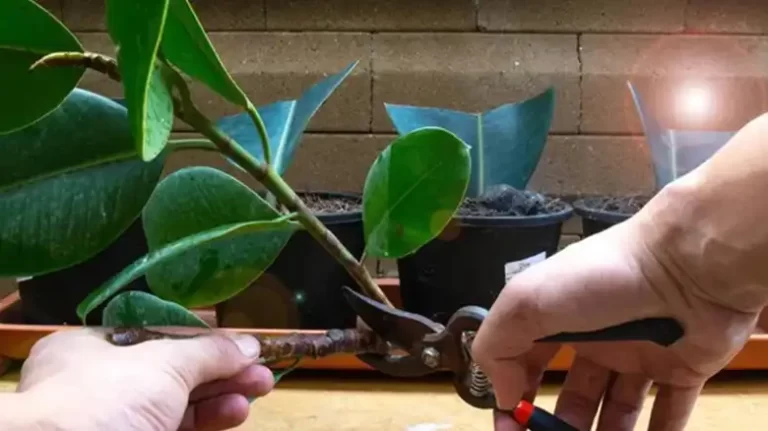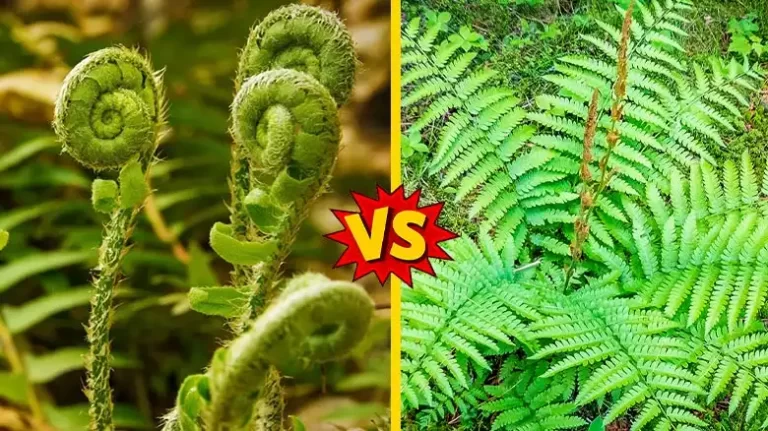Why Are the Leaves on My Strawberry Plant Turning Red
Strawberries are a delightful addition to any garden, but when you notice the leaves on your strawberry plants turning red, it can be a cause for concern. This phenomenon, while not uncommon, demands your attention as it can signal various underlying issues affecting the health of your beloved berries.
In this comprehensive guide, we will delve into the reasons behind red leaves on strawberry plants and equip you with the knowledge to not only diagnose the problem but also effectively address it. Let’s embark on this journey to ensure your strawberry plants thrive and bear delicious fruits.
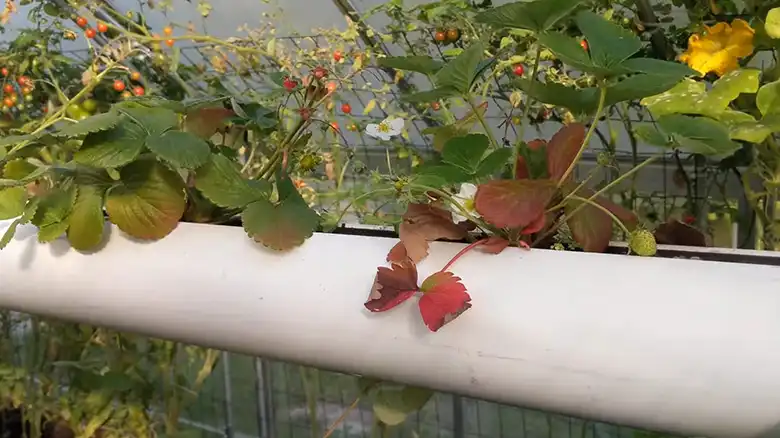
Common Causes of Red Leaves
When you’re tending to your strawberry patch and notice that the leaves on your beloved strawberry plants are turning red, it’s natural to be concerned. Those lush green leaves are not only visually appealing but also crucial for the plant’s overall health and fruit production.
Nutritional Issues
One of the primary reasons why the leaves on your strawberry plant may turn red is related to nutritional problems. Just like humans need a balanced diet to stay healthy, strawberry plants require specific nutrients to thrive. When these nutrients are lacking or imbalanced, it can manifest as red leaves.
1. Nitrogen Deficiency: Nitrogen is essential for leaf development, and when strawberry plants don’t get enough of it, their leaves can turn red. Nitrogen is like the plant’s version of a hearty meal, and a deficiency leaves them feeling hungry for that vital green pigment.
2. Phosphorus Deficiency: Phosphorus plays a critical role in overall plant health. If your soil is lacking in phosphorus, your strawberry plants may exhibit not only red leaves but also poor fruit development.
3. Potassium Deficiency: Potassium helps plants regulate their water balance and perform various essential functions. When potassium is insufficient, strawberry leaves may develop red or purple spots, signaling that something’s amiss in the nutrient department.
4. pH Imbalance: Just like Goldilocks searching for the perfect bowl of porridge, strawberry plants prefer their soil’s pH to be “just right.” If the soil becomes too acidic or too alkaline, it can hinder the plant’s ability to absorb nutrients, resulting in those frustrating red leaves.
Pest and Disease Problems
Strawberry plants, like all living things, are not immune to pests and diseases. These pesky invaders can wreak havoc on your garden and turn your strawberry leaves red.
1. Aphid Infestation: Aphids are tiny, sap-sucking insects that can quickly multiply and infest your strawberry plants. As they feed on plant juices, they can distort the leaves and cause them to turn red. It’s like a tiny vampire feast in your garden.
2. Spider Mites: These microscopic arachnids may be small, but they can inflict big damage. Spider mites suck the sap out of your strawberry leaves, leaving behind stippling and discoloration, often accompanied by redness.
3. Fungal Diseases: Various fungal diseases, such as Botrytis (Gray Mold), Powdery Mildew, and Verticillium Wilt, can infect your strawberry plants and lead to the dreaded red leaf syndrome. These fungi are like the plant’s worst nightmares come to life.
Watering and Drainage Issues
How much and how often you water your strawberry plants, along with the quality of soil drainage, also play crucial roles in leaf color.
1. Overwatering: Overly enthusiastic watering can lead to waterlogged soil, which suffocates the roots and can result in red leaves. Imagine trying to breathe with your feet submerged in water; plants don’t like it either.
2. Poor Drainage: If your garden soil doesn’t drain well, excess water can accumulate around the roots, causing similar problems as overwatering. It’s like wearing soggy socks all day; it’s uncomfortable and can lead to issues.
How to Diagnose the Problem
When you notice the leaves on your beloved strawberry plants taking on a reddish hue, it’s essential to diagnose the problem accurately. Understanding the root cause behind this color change is the first step in nursing your strawberry plants back to health. Here’s how you can effectively diagnose the issue:
Visual Inspection
Start by closely examining the leaves of your strawberry plants. Look for any unusual signs or patterns of redness. Pay attention to the following:
Red Patches: Are there large, irregular red patches on the leaves, or is the redness concentrated in specific areas?
Spots and Streaks: Do you see red spots or streaks on the leaves?
Edges vs. Centers: Are the edges of the leaves turning red while the centers remain green, or is it the other way around?
Leaf Health: Assess the overall health of the leaves. Are they wilted, curled, or showing any signs of distress?
Pest Presence
Some common pests can contribute to redness in strawberry leaves. While inspecting your plants, keep an eye out for signs of infestation, including:
Aphids: Look for tiny, soft-bodied insects clustered on the leaves, often in shades of green or black.
Spider Mites: These microscopic arachnids can cause stippling or tiny yellow dots on leaves, which can lead to redness.
Other Pests: Be vigilant for any unusual pests that might be lurking on your plants.
Soil Testing
The condition of your soil plays a significant role in the health of your strawberry plants. To assess your soil, consider the following steps:
pH Testing: Use a pH testing kit to determine the acidity or alkalinity of your soil. Strawberry plants thrive in slightly acidic soil (pH around 6.0).
Nutrient Levels: Conduct soil nutrient tests to identify any deficiencies or excesses in essential nutrients like nitrogen, phosphorus, and potassium.
Moisture Levels: Check the moisture content of the soil. Overly wet or dry soil can stress the plants, leading to redness in the leaves.
Observe Watering Habits
Your watering practices can also contribute to the reddening of strawberry leaves. Observe and adjust your watering routine by:
Checking Soil Moisture: Insert your finger into the soil to gauge its moisture level. Soil that is consistently soggy or excessively dry can lead to red leaves.
Adjusting Watering Schedule: If necessary, modify your watering schedule to maintain consistent moisture levels without overwatering.
Treating Red Leaves on Strawberry Plants
When you notice the leaves on your beloved strawberry plants turning an alarming shade of red, it’s a clear signal that something isn’t quite right. Fortunately, you don’t have to watch your strawberries suffer in silence.
In this section, we’ll explore effective ways to treat those red leaves and nurse your strawberry plants back to health.
Environmental Remedies
One of the first steps in treating red leaves on your strawberry plants is to shield them from the harsh sun.
Erecting temporary shade structures or using shade cloth can help protect your plants during the hottest parts of the day. This prevents sunburn and reduces heat stress, allowing the leaves to regain their natural green hue.
Protecting from Cold
If you’re facing colder weather or frost, taking precautions is vital. Using frost cloth or blankets to cover your plants during chilly nights can prevent cold stress and keep the leaves from turning red.
Mulching around the base of the plants in the late fall can also help insulate them during the winter, minimizing redness caused by cold exposure.
Seasonal Adjustments
As the seasons change, so do the needs of your strawberry plants. Pruning in the autumn months can help remove dead or diseased leaves, promoting healthier growth.
For those in colder regions, taking extra care to protect your plants during the winter is essential. Covering them or bringing them indoors can prevent winter-induced red leaves.
Balanced Fertilization
Nutrient deficiencies are a common cause of red leaves. To address this issue, select a balanced fertilizer that provides the necessary nutrients for your strawberry plants.
Follow the recommended application rates to ensure your plants get the right amount of nourishment. Proper fertilization can often restore the leaves to their vibrant green color.
pH Adjustment
The pH level of your soil can greatly impact nutrient absorption. If your soil pH is too acidic or alkaline, it can lead to red leaves.
Using lime to raise the pH or sulfur to lower it, as necessary, can help correct this issue. Regularly testing your soil’s pH and making adjustments as needed can ensure your plants receive the nutrients they require.
Avoiding Overfertilization
While it’s essential to address nutrient deficiencies, overfertilization can also lead to red leaves. Be cautious not to overdo it. Follow the recommended guidelines for fertilization to maintain a healthy balance and prevent redness caused by excess nutrients.
Pest and Disease Control
Beneficial insects like ladybugs and lacewings can be your allies in controlling pests that cause red leaves, such as aphids. Introducing these natural predators to your garden can help keep pest populations in check without resorting to chemical solutions.
Attracting birds and other wildlife that feed on garden pests can also contribute to a healthier strawberry patch.
Chemical Treatments
In some cases, chemical treatments may be necessary to combat pests and diseases causing red leaves. However, it’s crucial to use pesticides safely and responsibly.
Always follow the manufacturer’s instructions and consider organic alternatives whenever possible. Applying fungicides as needed can also help manage fungal diseases that lead to redness.
Cultural Practices
Practices like crop rotation can prevent the buildup of soil-borne diseases, reducing the risk of red leaves in the future. Additionally, maintaining proper hygiene in your garden by regularly cleaning up dead leaves and plant debris can minimize the risk of fungal infections.
Preventing Red Leaves in the Future
Taking care of your strawberry plants is essential to prevent red leaves from becoming a recurring issue.
Proper Plant Care
Here are some fundamental practices to ensure your strawberry plants stay healthy and vibrant:
Regular Pruning: Pruning your strawberry plants in late winter or early spring helps remove old, diseased leaves, allowing new ones to grow unimpeded.
Weed Control: Keep the area around your strawberry plants free of weeds, as they can compete for nutrients and water, causing stress to your plants.
Mulching: Apply a layer of mulch around your strawberry plants to regulate soil temperature, retain moisture, and prevent weeds.
Proper Watering: Water your strawberry plants consistently and evenly to maintain soil moisture. Avoid overwatering or allowing the soil to become too dry.
Adequate Spacing: Ensure that your strawberry plants are spaced correctly to allow for good air circulation, which reduces the risk of fungal diseases.
Soil Preparation
Healthy soil is the foundation of healthy strawberry plants. Follow these soil preparation tips to create an optimal growing environment:
Soil Testing: Periodically test your soil’s pH and nutrient levels to identify any deficiencies or imbalances.
pH Adjustment: If the pH is too high (alkaline) or too low (acidic), make the necessary amendments using lime or sulfur to bring it into the ideal range of 5.5 to 6.8.
Organic Matter: Incorporate organic matter, such as compost or well-rotted manure, into your soil to improve its structure and fertility.
Proper Drainage: Ensure that your soil has good drainage to prevent waterlogging, which can lead to red leaves.
Pest and Disease Management
Proactive pest and disease management can go a long way in preventing red leaves on your strawberry plants. Here’s what you can do:
Regular Inspections: Regularly inspect your plants for signs of pests or diseases. Early detection allows for prompt intervention.
Companion Planting: Consider planting companion plants that deter common strawberry pests, such as marigolds to repel aphids.
Cleanliness: Maintain a clean garden by removing dead leaves and debris, reducing hiding places for pests and disease pathogens.
Beneficial Insects: Encourage beneficial insects like ladybugs and parasitic wasps that naturally control strawberry pests.
Crop Rotation
Implementing a proper crop rotation plan can help break the cycle of pests and diseases and keep your strawberry plants healthy:
Rotate Plant Families: Avoid planting strawberries in the same area where they grew in the previous year. Rotate them with different plant families to reduce disease buildup.
Cover Crops: Plant cover crops like clover or rye in the off-season to improve soil health and prevent weed growth.
Record Keeping: Keep records of where you’ve planted your strawberries each year to ensure a proper rotation schedule.
Protecting from Extreme Weather
Extreme weather conditions can stress strawberry plants and lead to red leaves. Here’s how to protect your plants:
Frost Protection: Use frost cloth or row covers to shield your strawberry plants from late spring frosts or early fall freezes.
Shade: In areas with scorching summers, provide partial shade during the hottest part of the day to prevent heat stress.
Windbreaks: Erect windbreaks, such as fences or trellises, to protect your plants from strong winds, which can damage leaves.
Common Questions
Can I Use Any Type of Mulch for Winter Protection?
No, you should use suitable mulch materials for winter protection. Straw is a common and effective choice, but you can also use leaves, pine needles, or commercial frost cloth. The key is to create an insulating layer that helps protect your strawberry plants from freezing temperatures during the winter.
How Often Should I Test My Soil’s PH?
You should test your soil’s pH at least once a year, preferably in the spring before planting your strawberry plants. However, if you’ve previously encountered pH-related issues or have made significant changes to your soil, it’s wise to test more frequently to ensure the pH remains within the optimal range of 5.5 to 6.8.
Is It Safe to Use Chemical Pesticides in My Strawberry Patch?
While chemical pesticides can be effective, they should be used as a last resort and with caution. Always follow the manufacturer’s instructions carefully and consider organic alternatives first.
Chemical pesticides can harm beneficial insects and have environmental impacts, so it’s essential to use them sparingly and only when absolutely necessary.
Can I Prevent Aphids Without Using Pesticides?
Yes, you can prevent aphids without resorting to pesticides. Implementing natural predator control is an effective approach. Introduce beneficial insects like ladybugs, lacewings, or parasitic wasps, which feed on aphids and help keep their populations in check.
Our Thoughts
In the world of gardening, the vibrant red leaves on your strawberry plants are like nature’s distress signal, urging you to take action.
By understanding the various factors that can contribute to this issue and following the steps outlined in this guide, you can not only diagnose and treat red leaves but also prevent them from reoccurring.
With proper care, your strawberry plants will flourish, producing bountiful and delicious berries for seasons to come. Happy gardening!
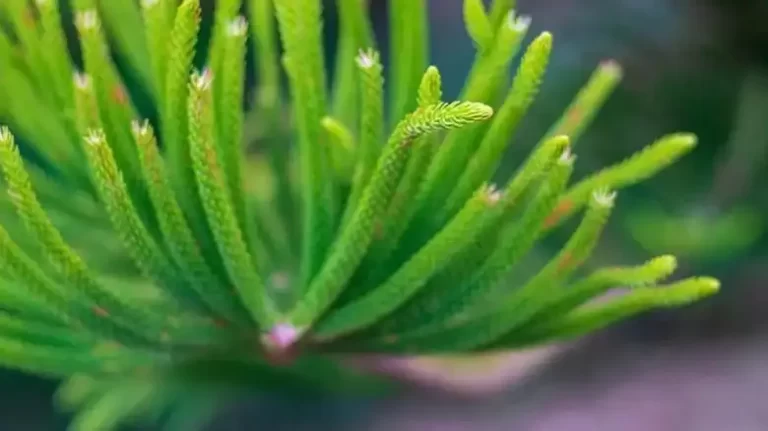
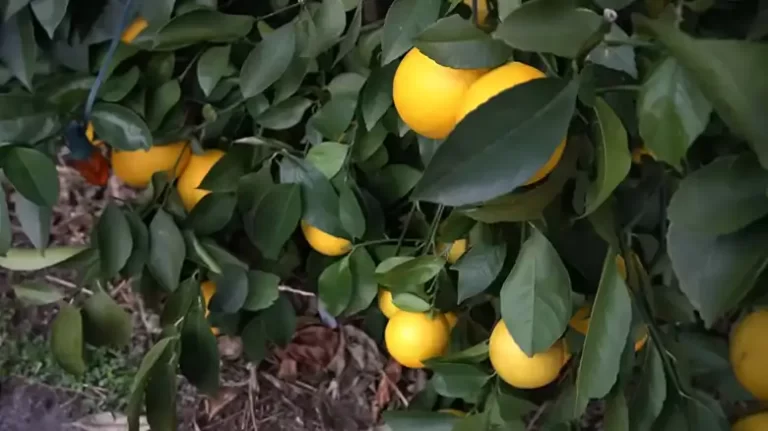
![Dolphin Flower Plant [Total Care Guide]](https://www.daisynatives.com/wp-content/uploads/2023/12/Dolphin-Flower-Plant-768x431.webp)
